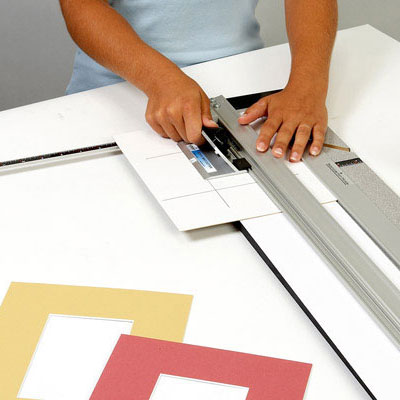Part Two in a Series
Picture framing is expensive. One reason has to do with the fact that most traditional frame shops practice conservation framing to the exclusion of any other kind. Conservation framing is a costly method that seeks to preserve the long term value of art for generations to come.
But when you think about it, most items don't need to be preserved for so long. Most art is purchased to fill empty wall space and express a personal aesthetic. The idea that future generations will share in this aesthetic and want to continue displaying it is kind of a stretch.
What's more, many art pieces have low intrinsic value. They may cost the buyer less than $400 and then lose value over time. Other art, such as posters and digital prints, are probably not worth much to begin with and will probably not increase in value over time.
To spend lavishly to frame them on the remote chance that they will become valuable in the future plays on a fear born of ignorance. We are all aware of art that we cherish that was imperiled because some numbskull didn't know how to frame it properly. But we have mostly forgotten about the art that got put out by the dumpster because it no longer appealed to anyone. What if someone had paid top dollar to have all that stuff framed!
So how much should we be paying to have things framed?
A Commonsense Perspective
Employing a strictly logical measure, the cost of framing should not greatly exceed the cost of the art itself. The cost of embellishing something should not cost more than the thing to be embellished.
Given the intrinsic cost of picture framing – the cost of a frame, mat, glass and backing – it is often difficult to achieve this commonsense objective, but that doesn't mean you shouldn't try. When art has little or no inherent value and will probably not be handed down from generation to generation, you should try to hold down the cost of framing it.
Holding down the cost of framing doesn't mean that the framing has to be cheap or inferior. When framed art is hung on the wall, it may look just fine, and to an unstudied eye may look as good as something that costs far more. So why pay more?
I can already hear the purists howling. "Cheap framing that looks passable is not the same thing as quality custom framing performed by an experienced framing professional!"
That's true. But it's also true that spending four times the cost of an item to have it framed is bad economics, no matter how you slice it.
b>The Role of High End Picture Framing
Many professional framers take the view that picture framing is like quality furniture building; it requires superior materials, deft craftsmanship and a good aesthetic eye. But even the best furniture builder will not tell you that a good sofa pillow should cost more than the sofa, or that the canopy on a four poster bed should cost more than the bed.
Which is not to say there is no place for high end, custom picture framing of the kind traditional frame shops typically specialize in, just that high end framing should be reserved for high end art. If the art costs $1,000 to purchase, than paying $400 to have it framed makes good fiscal sense.
But if the art costs $200, paying $400 to have it frame borders on recklessness.
So how do you pay a commensurate value for picture framing if traditional frame shops discourage you from doing so?
There are some ways, which we will explore in the final post in this series, entitled: How Can You Reduce the Cost of Picture Framing.












